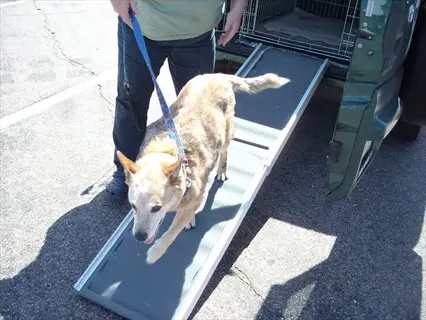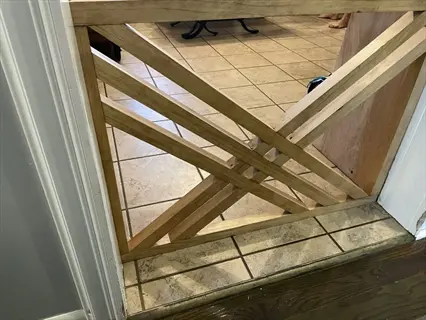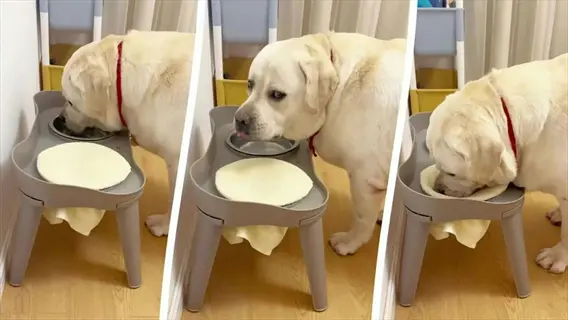10 Compelling Reasons for Adopting Senior Pets

Written by
Elin Eriksson
Reviewed by
Prof. Edward Clarke, Ph.D.Adopting senior pets provides instant companionship without puppy training demands
Shelters cover vaccinations and initial medical care to reduce adoption costs
Senior pets typically enjoy 5-8 quality years of loyal companionship
Older animals learn commands quickly and adapt well to new homes
Adoption directly rescues seniors from euthanasia risks in crowded shelters
Finding compatible seniors is easy through shelters and specialized rescues
Article Navigation
To adopt older pets means to take in dogs or cats who are seven years old or older. Think of a gentle ten-year-old lab, for example, or a wise nine-year-old Siamese. These pets have an adoption rate of approximately 25%. Puppies and kittens have an adoption rate of nearly 60%. This represents how many people ignore their older friends.
No other source of gratitude compares with that of the older pet. The bonds run deep with them, and the companionship is calm. Their calm undertaking companionship suits busy households best. The life-giving choice also relates to their selection, where a shelter pet is rescued from crowded surroundings. This act opens up places in shelters for other needy animals.
Health and Care Essentials
Shelters manage the initial veterinary care of the older pets you adopt. This consists of basic vaccinations and spaying or neutering. This reduces your initial costs considerably. You need to devote your efforts to daily comfort. Your new companion arrives ready for bonding, minus the hidden fees.
Joint supplements make a real difference to older dogs. They maintain ease of movement and comfort for individuals with arthritis. It may be wise to add glucosamine to their feed. Making this simple addition can help them climb stairs and enjoy their walk. You're saving their quality of life.
Opt for sound nutrition. Medical diets can address specific ailments, such as kidney or metabolic disorders. Aggressive formulas often lack essential nutrients found in a regular diet. Ask your vet about individual diets. Correct nutrition helps with weight and sustains good organ function. Your pet will thrive on a balanced diet.
Prevent mishaps using non-slip mats. Please place them in high-traffic areas and areas of the home where animals are present. Hard floors can be particularly hazardous for individuals with aging joints. Use these mats for good footing during transitions in the house. Use them and create a safe environment from day one.
Preparing Your Home
Safeguard against perilous falls with non-slip rugs throughout your home. They provide a steady footing on hardwood and tile floors. Older pets often experience balance difficulties. Rubber-backed varieties stay firmly in place. Thus, it creates a healthy situation for their daily movements.
Install pet ramps next to couches and beds. Older dogs don't have to make the painful leap with the assistance of these devices. Check out those with side rails and a rough surface. Take measurements to ensure the correct furniture height before making a purchase. Simple add-ons help to maintain joint health.
Choose a quiet retreat area away from household distractions. Use a calm corner with their bed and favorite toys. This safe space helps lower stress during the adjustment period. Older pets also appreciate their calming zone to urinate.
Eliminate harmful plants, such as lilies and philodendrons, immediately. Older pets know to explore by mouth and nibble at foliage. Refer to the ASPCA plant list for a list of harmful plants. Replace them with safe plants such as spider plants. You proactively protect their health.

Non-Slip Flooring
- Fact: Senior pets often experience mobility challenges that make slippery floors dangerous
- Place rubber-backed rugs in high-traffic areas to provide secure footing
- Avoid loose rugs that could trip pets with limited vision or balance
- Consider interlocking foam tiles for complete room coverage and joint cushioning
- Regularly check rug edges to prevent curling that creates tripping hazards
- Non-slip surfaces reduce fall risks and help arthritic pets move confidently

Pet Ramps
- Fact: Portable ramps enable safe vehicle access without painful jumping
- Measure your car's trunk height and couch/bed heights before purchasing
- Look for ramps with non-slip surfaces and side railings for security
- Folding designs store easily and work for both indoor and outdoor use
- Practice ramp training using treats before expecting independent use
- Ramps preserve joint health by eliminating high-impact movements

Orthopedic Beds
- Fact: Memory foam beds relieve pressure on aging joints during rest
- Choose waterproof covers for pets with occasional incontinence issues
- Position beds away from drafts but not near heat sources
- Select beds with low sides for easy access with stiff limbs
- Replace beds when foam loses support or shows wear
- Proper bedding improves sleep quality and reduces morning stiffness

Safety Gates
- Fact: Block staircases to prevent falls from weakened hind legs
- Use pressure-mounted gates for temporary barriers without installation
- Ensure gate slats are narrow enough to prevent head entrapment
- Create safe zones by gating off unsafe areas like workshops
- Supervise initial interactions to ensure pets don't attempt jumping
- Gates provide security while allowing visual access to family

Food Station Setup
- Fact: Raised bowls reduce neck strain and improve digestion posture
- Place food/water in quiet areas away from household traffic
- Use non-skid mats under bowls to prevent sliding during meals
- Ensure multiple water stations for pets with mobility limitations
- Select shallow bowls for pets with facial arthritis or vision loss
- Accessible feeding setups encourage consistent eating and hydration
Why They're Overlooked
Many people avoid adopting senior pets due to concerns about excessive vet bills. Shelters counteract this by providing initial treatments, such as vaccinations and dental services. You get a health-checked companion without any surprise expenses. Ongoing care averages about the same as the younger pets' preventative regimen. There are also ways to get financial help.
You'll gain valuable companionship for many years to come. Adopted seniors enjoy on average 5-8 quality years. Small breeds enjoy 12 + years. This timeframe will allow for close bonding without the chaos of puppyhood. Quality time is worth more than quantity. Careful tending extends their healthy life span.
Behavior issues dissipate rapidly. Most problems resolve during the 3-month adjustment period through routine. Shelters give records of temperament and instruction. Older pets tend to adapt to new homes more readily than puppies. Their calm nature enables them to have a greater capacity to learn household rules.
Shelters provide complete health disclosures before adoption. You receive copies of all medical records and any known medical conditions. With this information, you can be confident that you have all available documentation. Your veterinarian's instructions are clearly understandable. You can then make informed decisions about your new companion's care.
Myth: High Medical Costs
- Reality: Shelters cover initial vaccinations, spaying/neutering, and health screenings. Common senior needs like arthritis management average $100-$200 monthly
- Preventative care plans reduce long-term expenses through early detection
- Many shelters offer post-adoption support for chronic conditions
Myth: Short Time Together
- Reality: Adopted seniors typically enjoy 5-8 quality years. Smaller breeds often live 12+ years
- Focused senior care extends lifespan through proper nutrition and exercise
- Quality time matters more than quantity - seniors provide deep companionship daily
Myth: Behavioral Problems
- Reality: 90% of behavior issues resolve within the 3-3-3 adjustment period
- Shelters conduct temperament testing and provide training records
- Older pets have calmer dispositions and adapt to routines faster than puppies
Myth: Can't Learn New Things
- Reality: Senior pets master commands 30% faster with consistent training
- Cognitive enrichment through puzzle toys maintains mental sharpness
- Many shelter seniors already know basic obedience commands
Myth: Less Affectionate
- Reality: Adopted seniors show profound gratitude through constant companionship
- They form deeper bonds faster, often becoming 'velcro pets' to adopters
- Calmer demeanor allows for more relaxed cuddle sessions than hyper puppies
10 Compelling Reasons to Adopt
A primary reason for adopting senior pets is instant companionship. There's no annoying puppy training period. Your new pal comes fully trained in the fondness department and ready for walks! They have a calming influence upon arrival. This new kind of bond enables a deeper connection than would occur with a younger animal.
You reap tangible benefits such as *housebroken habits* and *predictable traits.* Senior pets understand household boundaries without accidents. They are their full-grown size and temperament. It's their natural energy that complements a relaxed lifestyle so well. They recognize the need for a homey sleeping environment, rather than constantly having to do things at a pace that suits them.
You experience immense gratitude and retention in training. Senior pets repay your unwavering loyalty with unwavering companionship, learning commands rapidly through positive reinforcement. The cost is lower too, as shelters waive the adoption fee for the elderly. The result is less financial strain and greater accessibility to care.
Your decision leads to a life-saving impact. Adopting gives them a second chance by reducing euthanasia in crowded shelter environments. Additionally, this meaningful time is a period of release from stress, as the relationships formed and the calmness provided lead to peaceful times together. You will be saving them, while you yourself obtain a loving companion for your later years.
Finding Your Perfect Match
Search efficiently with breed-specific rescue organizations that specialize in rehabilitating senior animals. For example, Golden Oldies take a special interest in purebreds that are "mature." They have valuable histories of the animal's behavior in foster homes. Their expertise is useful in placing companions with the appropriate personality. The lovable animal will have the traits you expect.
The term "interstate transport services" applies when local options are limited. Many rescues (and sometimes not) coordinate networks across the country. These cover many areas, which may or may not incur any costs for you. Your adoptee may be perfect for you, even if you're states away. These transportation teams provide you and your adoptee with a safe and comfortable journey.
Consider a "foster-to-adopt" trial before committing to adoption. This 2-4 week trial allows pets to settle in at their own pace, and you are provided with supplies, food, and veterinary support during this acclimation phase. Most trials end in adoption. This relatively low-risk trial will give the animal confidence.
Prioritize matching energy levels in meetings. Observe how pets interact with your daily routine. An older active dog may do better with regular walkers, while a calm dog may be more appropriate in a quieter home. If you are compatible, both of you will be happy for years to come. Your lifestyle dictates this critical decision.
Local Shelters First
- Priority: Visit nearby shelters daily - seniors arrive constantly
- Ask staff about newly surrendered older pets not yet listed online
- Complete 'senior pet interest' forms for automatic notifications
- Weekday mornings offer quieter environments for bonding
Breed-Specific Rescues
- Specialization: Organizations focus on senior purebreds like Golden Retrievers
- Benefit from breed-experienced foster homes that document behaviors
- Waitlists available for specific age/health condition preferences
- Transport networks available across most regions at no cost
Online Search Tools
- Filter: Use adoption sites' 'Senior Pets' and 'Special Needs' filters
- Set alerts for keywords like 'calm senior' or 'low-energy companion'
- Check 'Urgent' sections where seniors face higher adoption priority
- Verify rescue legitimacy through official organization profiles
Foster-to-Adopt Trials
- Low-Risk: 2-4 week trials through shelter foster programs
- Receive supplies and medical support during evaluation period
- Assess home compatibility with existing pets/children
- Most trial participants proceed to full adoption
Compatibility Assessment
- Critical Checks: Match pet's energy level to your daily routine
- Introduce slowly to household members over multiple visits
- Request veterinary records including dental/arthritis assessments
- Observe reactions to common triggers like loud noises or other animals
5 Common Myths
Aged pets require continual financial assistance from veterinary services which discourages adoption
Shelters provide thorough medical screenings and even pay for initial treatments such as vaccinations and dental work. Monthly expenses for routine conditions such as artheritis run from $100 to $200 which is similar to the cost of the preventative care for younger pets. Some organizations offer financial assistance programs for senior pet adopters.
Choosing a senior pet means only a short time together, before losing that pet
@Most senior pets adopted spend 5-8 quality years of companionship with us. usually small breed pets live 12+ years. This time span allows deep bonding while getting by without having the intensive training period of puppies. Quality times together are much more important than length of time. Focused caring for them also adds greatly to their healthy life span.
Older pets develop stubborn behavioral problems that cannot be remedied by training
Most behavioral issues do improve in the customary 3-3-3 adjustment period with consistency in routine. Senior pets frequently have calmer dispositions and learn commands much more quickly than puppies given positive reinforcement. Shelters extensively temperament test all animals and have detailed behavioral histories.
Older animals have difficulty learning new commands and adjusting to new surroundings
Older pets shine at learning with puzzle toys and training sessions, picking up new household rules in weeks. Their longer attention spans make them better suited for learning commands like door signals or medication schedules. Many shelter seniors already know many commands taught in obedience classes as they come from previous homes.
Older adopted pets are not nearly as affectionate and loyal as younger pets
Senior pets show huge gratitude by their presence, often having great companionship qualities, which fosters closeness to their adopters. Their more calm dispositions allow for more relaxed time of bond formation and emotional assistance. Some develop strong protector instincts with their new families and methods of communication, sometimes ingenious.
Conclusion
Senior pets offer instant companionship, eliminating the lengthy training period typically required for younger pets. They arrive ready to be loved and to give their loving, calm devotion. The exhausting puppy stage is avoided. You will instead have a grateful companion that fits comfortably into the daily routine from the very first day.
Your choice for adoption has a direct life impact that saves lives. The overcrowded shelter faces impossible decisions daily. An older pet opens the door for others. You become part of the solution. This single act means the difference between life and death for the deserving animals needing homes.
Profound emotional rewards come from comforting. Older animals convey great appreciation through continual loyalty. Their golden years become priceless, meaningful moments shared. You enjoy the warmth of constant love while giving security. This divine association enriches both lives inexpressibly.
Take action this week, go to your local shelters and meet the senior companions available. Discuss with staff the mature pets that are often overlooked. Fill out the adoption papers today. Your perfect match is patiently waiting for its second chance at love and comfort.
External Sources
Frequently Asked Questions
What is the best age to adopt a rescue pet?
Senior pets are excellent choices for adoption as they offer immediate companionship without intensive training needs. They typically come housebroken and with established temperaments. Mature animals provide calm companionship and bond deeply with adopters during their remaining quality years.
Are senior pets more expensive to care for?
Shelters cover initial medical treatments like vaccinations and dental work. While some seniors need arthritis supplements or special diets, costs average similarly to younger pets' preventative care. Many organizations offer financial assistance programs specifically for senior pet adopters.
How long does it take senior pets to adjust to new homes?
Most adapt within weeks through the 3-3-3 adjustment framework:
- First 3 days: Decompression in quiet space
- First 3 weeks: Learning routines and boundaries
- First 3 months: Building trust and full bonding
Can older pets learn new commands?
Yes, senior pets excel at learning through positive reinforcement training. Their longer attention spans help them master household rules and medication routines faster than puppies. Many already know basic obedience from previous homes and quickly adapt to new environments.
What makes senior pets ideal companions for older adults?
They perfectly match slower lifestyles through:
- Lower energy requirements than puppies
- Minimal training needs and established manners
- Calm presence that reduces stress
- Deep loyalty and constant companionship
Do shelters provide health guarantees for senior pets?
Reputable shelters conduct thorough health screenings and disclose all known conditions. Most cover initial treatments and provide medical histories. Ongoing care support includes discounted veterinary partnerships and guidance on managing age-related conditions through proper nutrition and supplements.
How do I find compatible senior pets for adoption?
Effective methods include:
- Local shelter visits with 'senior pet' notifications
- Breed-specific rescues specializing in older animals
- Online filters for calm temperaments and low energy
- Foster-to-adopt trials ensuring home compatibility
Are adopted senior pets affectionate?
Absolutely. Senior animals demonstrate profound gratitude through constant companionship and loyalty. They form deep bonds quickly, often becoming 'velcro pets' who provide consistent emotional support. Their calm demeanor enables relaxed cuddling and unique communication with adopters.
What home modifications help senior pets?
Essential adjustments include:
- Non-slip flooring to prevent falls
- Ramps for furniture/car access
- Orthopedic beds for joint support
- Accessible food/water stations
- Safety gates blocking hazardous areas
Do senior pets have behavioral issues?
Most behavioral concerns resolve during the standard adjustment period with consistent routines. Shelters conduct temperament testing and provide training records. Older pets typically have calmer dispositions than puppies and adapt faster to household rules when given clear boundaries.

